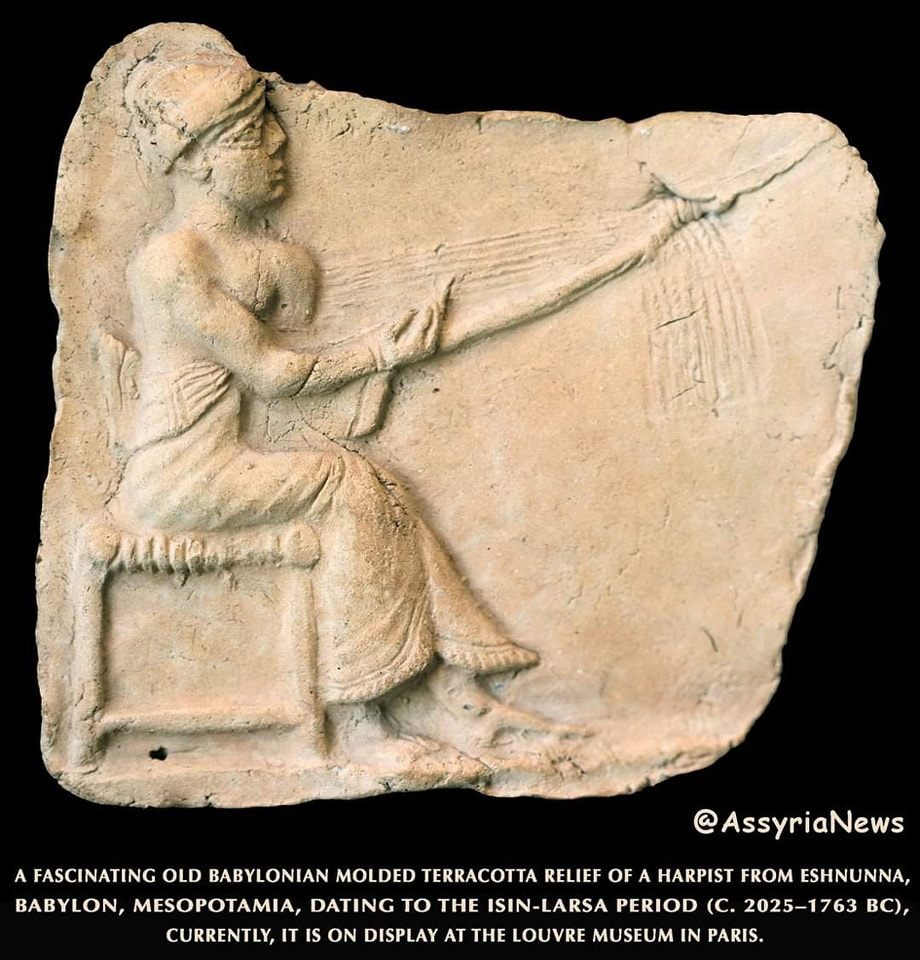A harpist from Eshnona

A magnificent ancient Babylonian cast clay relief of a lyre player from Eshnunna, Babylon, Mesopotamia, dating to the Isin-Larsa period (ca. 2025-1763 BC)
It is currently on display in the Louvre Museum in Paris.
The Isin and Larsa period (ca. 2025 – 1763 BC, in the Middle Dating System, or 1961 – 1699 BC, in the Short Dating System) is a phase of ancient Mesopotamian history, extending from the end of the Third Dynasty of Ur to the conquest of Mesopotamia by King Hammurabi Babylon, which led to the emergence of the first Babylonian dynasty. According to approximate traditional dating, this period begins in 2025 BC and ends in 1763 BC. This period represents the first part of the Old Babylonian period (2025 - 1595 BC), and the second part represents the dominance of the First Babylonian dynasty, which ends with the sack of Babylon in 1595 BC and the rise of the Kassites.
The period of the Third Dynasty of Ur was just before the period of Isin and Larsa, and the combined attacks of the Amorites to the west and the Elamites to the east were the cause of its downfall. As its name indicates, the Isin-Larsa period saw the successive rise of two major powers in Lower Mesopotamia: the Kingdom of Isin, which sought to succeed the Kingdom of Ur after its fall and founded the Isin Dynasty, and the Kingdom of Larsa, whose fall marks the end of the period. In fact, neither of these kingdoms exercised consistent dominance in Lower Mesopotamia, and they had to coexist with less powerful kingdoms (Uruk, Babylon, Mankesum...), which, while having no influence further north, made room for powerful political entities. Others (Eshnunna, Ekalatum, Mari, Yamhad). The lineages of this period share that they are of Semitic Amorite origin, although they were culturally mixed with Mesopotamian traditions.
Source: websites

